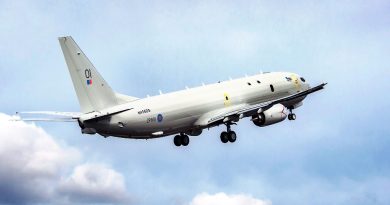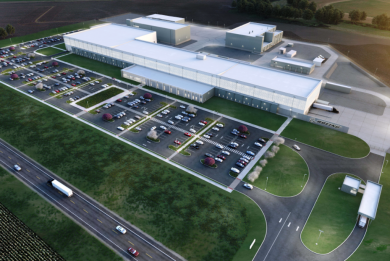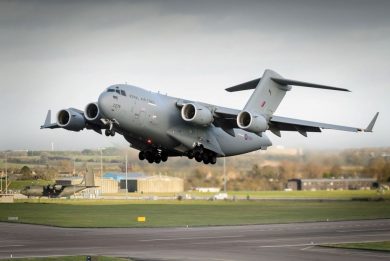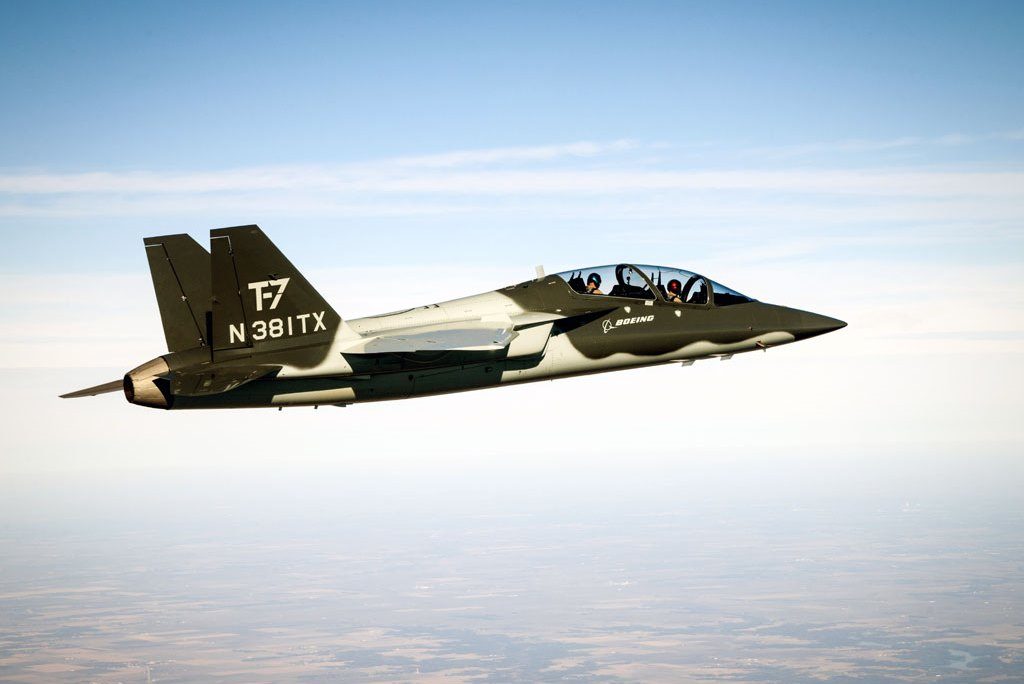
T-7A Red Hawk flight testing well underway
By Paolo Valpolini
The first topic on the webinar list was the T-7A Red Hawk, which first production aircraft deliveries are expected in 2023 at Joint Base San Antonio-Randolph, Texas, with the Initial Operational Capability confirmed for 2024, the Full Operational Capability to be reached 10 years later when all 351 T-7A will be in service, replacing all T-38C flying with the Air Education and Training Command. Since the Singapore Airshow, early February 2020, when the Phase One of Engineering and Manufacturing Development (EMD) tests, which is being carried out with the two existing prototypes, was completed at 30%, this figure has now climbed up to 80% notwithstanding the COVID limitations, Thom Breckenridge, Vice President, International Sales Strike, Surveillance & Mobility at Boeing Defense, Space & Security said. Over 200 flights have been made, with up to six flights per day and 11 in a single weak, availability and quick turn around being key elements for a training aircraft. Aircraft have been tested at high and low altitude, high and low speed, i.e. maximum speed at low altitude reaching 557 knots at 5,000 feet, as well as cross-wind testing, the T-7 having shown good landing performances even in presence of strong lateral wind.
More details on flight tests were provided by Dan “Dragon” Draeger, Chief Test Pilot, Boeing Tactical Aircraft at Boeing Test & Evaluation. During test flights many of the USAF requirements were not only met but even overcome, i.e. threshold AoA was set at 20° and objective at 25°, however according to Boeing test pilot the T-7A manoeuvred well even beyond the objective limit, the same applying to sustained and instantaneous turn rates, respectively 12.5°/s and 18°/s, the aircraft exceeding those limits. The USAF threshold for sustained turn was 6.5 Gs, with an objective figure placed at 7.5 Gs, and here too the latter figure was overcome. Inverted and negative “G” testing is nearly complete, while in the coming weeks the Red Hawk prototypes will be confronted with hot weather tests, elevated Angle of Attack (AoA) tests, and will continue engine re-start tests. Dragon underlined that the previously mentioned capabilities of the T-7A put it right in the centre of where new generation fighter/bomber aircraft would operate, providing student pilots with skills necessary to more effectively transition to combat aircraft. He also added that the aircraft can be tailored from the mission system perspective, as radar, RWR, weapon systems and other subsystems used on fighters can be synthetically reproduced and operated from the Red Hawk cockpit large display, allowing the student to get used to what he will find in the operational aircraft.
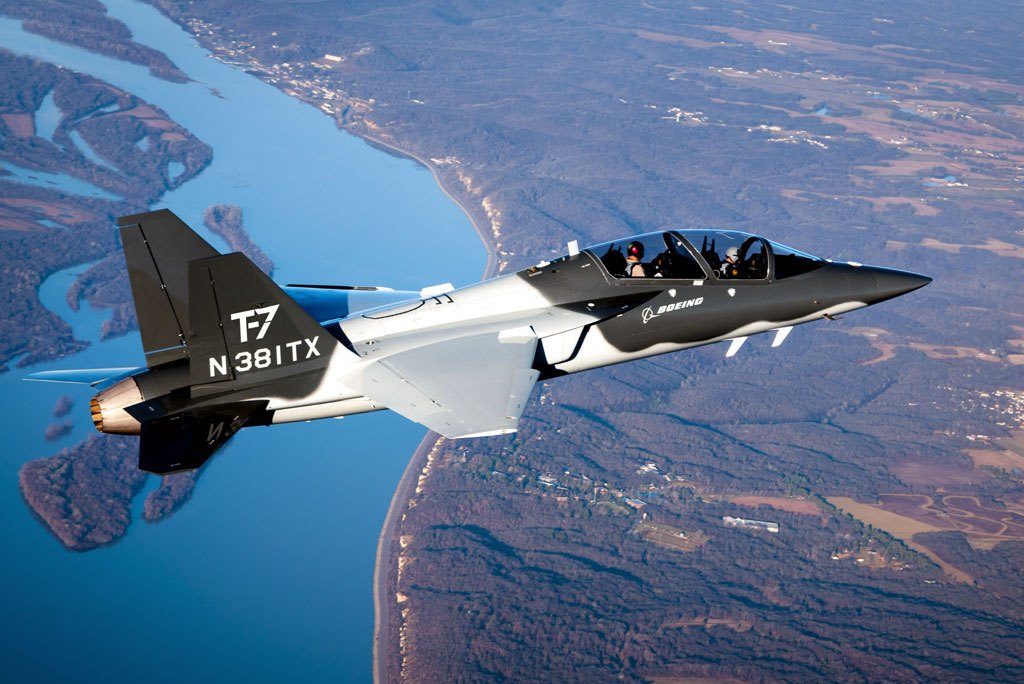
Pam Valdez, Vice President Air Force Services at Boeing Global Services underlined that the T-7 being a training system, not only an aircraft, a key part of it is the Ground Based Training (GBT), which is made of six different systems leading the student to flight operations; delivery of the training system to the USAF will precede that of the first aircraft, and upgrades will always be made first on GBT items as these are precursors to the actual plane, the ideal timeline being to upgrade GBT items two months ahead of the plane. Asked about a Light Attack and a Naval versions, Thom Breckenridge answered that the aircraft is definitely designed for growth, and among potential markets he mentioned that of F-5 and Alphajet replacement, among others, highlighting a “very strong interest” for the T-7 from various countries, many of them from the Asia-Pacific region. Should export contracts be acquired, Boeing stated that the production system is flexible and is ready to cope with an increased production pace, licence production in a customer nation being also a possible solution.
Boeing was awarded the US$ 9.2 billion Indefinite Delivery/Indefinite Quantity contract on 27 September 2018 with the Engineering and Manufacturing Development (EMD) delivery order as a Fixed Price Incentive Firm worth US$ 813.4 million and the Production delivery order as a FPIF with transition to Firm Fixed Price. Currently Boeing and its partner Saab have initiated the production of EMD aircraft in Saint Louis and in Linköping.
Photos courtesy Boeing

